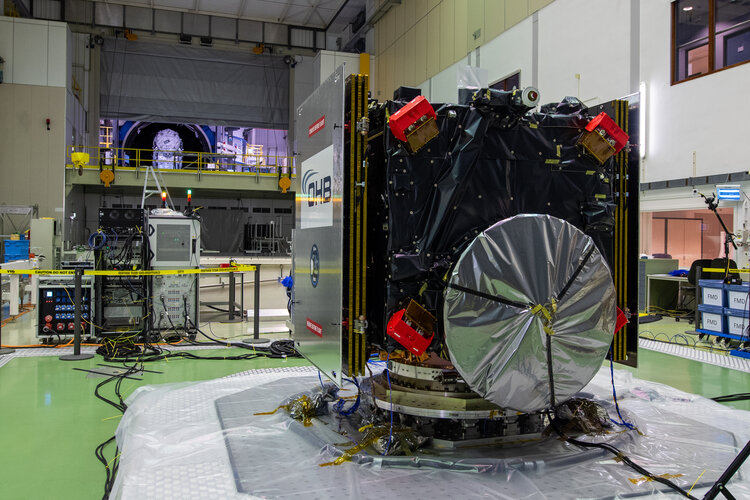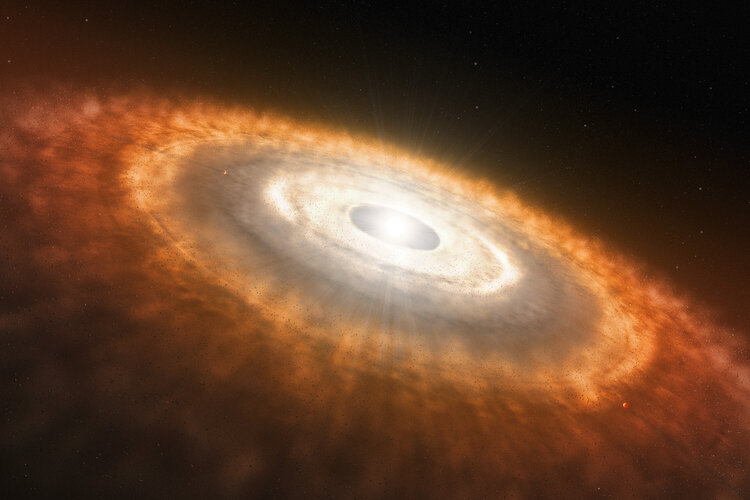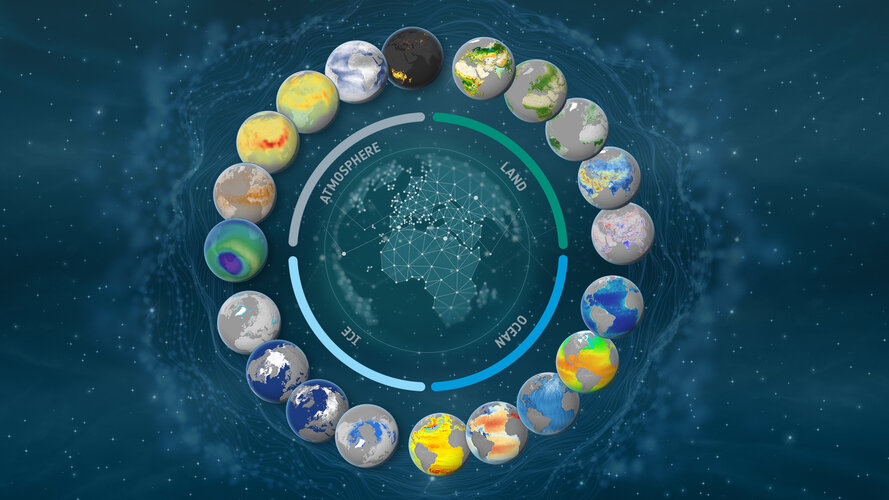
Copernical Team
Space Team Europe for Euclid: Laurent Brouard
 Video:
00:08:29
Video:
00:08:29
Focus on Euclid with Laurent Brouard: “I’m going to show you what a telescope that we send into space looks like.”
Laurent Brouard, Project Manager at Airbus Defence and Space, was responsible for building the Euclid payload module (PLM).
In this interview, which took place in a clean room at the Airbus premises in Toulouse, he describes with words, gestures, and the Euclid PLM structural and thermal model how Euclid works.
Did you know that Euclid sees the same part of the sky at the same time in both the infrared and visible wavelengths? Or that in space radiators
Hera asteroid mission, shaken not stirred
 Image:
Hera asteroid mission, shaken not stirred
Image:
Hera asteroid mission, shaken not stirred Webb study reveals rocky planets can form in extreme environments

An international team of astronomers have used the NASA/ESA/CSA James Webb Space Telescope to provide the first observation of water and other molecules in the inner, rocky-planet-forming regions of a disc in one of the most extreme environments in our galaxy.
Ariane 6 media briefing – November 2023
 Video:
01:00:00
Video:
01:00:00
Watch the replay of the media briefing on Ariane 6 during which ESA Director General Josef Aschbacher outlines the progress achieved after the successful hot firing test on 23 November 2023 at Europe’s Spaceport in French Guiana, as well as the upcoming steps in the Ariane 6 development test campaign, including ESA, CNES and ArianeGroup targeting the first launch of Ariane 6 between mid June and end of July 2024. Participants also includes Martin Sion, CEO, ArianeGroup ; Philippe Baptiste, President of CNES and Stéphane Israël, CEO, Arianespace.
Taking climate action with Earth observation

As global temperatures records are smashed and greenhouse gas emissions reach new highs, a new report from the UN Environment Programme finds that current pledges under the Paris Agreement put the world on track for a 2.5–2.9°C temperature rise this century – pointing to the urgent need for increased climate action.
The report is timely as nearly 200 nations gather in the coming two weeks at the United Nations COP28 Climate Change Summit to conclude the world’s first ever ‘Global Stocktake’ on climate change. Swift and sustained climate action is needed to avoid the worst
Minimalist or maximalist? The life of a microbe a mile underground
 If you added up all the microbes living deep below Earth's surface, the amount of biomass would outweigh all life within our oceans. But because this abundant life is so difficult to reach, it is widely understudied and incompletely understood. By accessing the deep underground through a former goldmine-turned-lab in South Dakota's Black Hills, Northwestern University researchers have pieced tog
If you added up all the microbes living deep below Earth's surface, the amount of biomass would outweigh all life within our oceans. But because this abundant life is so difficult to reach, it is widely understudied and incompletely understood. By accessing the deep underground through a former goldmine-turned-lab in South Dakota's Black Hills, Northwestern University researchers have pieced tog Macao science satellites begin study of South Atlantic Anomaly
 The Macao Science Satellite 1A and 1B, after a successful six-month trial in orbit, have officially commenced formal operations, marking a significant milestone in space-based geomagnetic monitoring. Jointly developed by scientists from the Chinese mainland and Macao, these satellites were launched on May 21 by a Long March 2C rocket from the Jiuquan Satellite Launch Center.
During their t
The Macao Science Satellite 1A and 1B, after a successful six-month trial in orbit, have officially commenced formal operations, marking a significant milestone in space-based geomagnetic monitoring. Jointly developed by scientists from the Chinese mainland and Macao, these satellites were launched on May 21 by a Long March 2C rocket from the Jiuquan Satellite Launch Center.
During their t Framatome partners with USNC to produce fuel for Micro-Modular Reactors
Firefly Aerospace completes first Miranda Engine hot fire test
 Firefly Aerospace, Inc., has marked a significant achievement in its propulsion technology with the completion of the first hot fire test of the Miranda engine. This pivotal development comes just over a year after the initial contract signing, underscoring the company's rapid progress in aerospace technology.
The Miranda engine, a turbopump-fed system, is set to be a key component in the
Firefly Aerospace, Inc., has marked a significant achievement in its propulsion technology with the completion of the first hot fire test of the Miranda engine. This pivotal development comes just over a year after the initial contract signing, underscoring the company's rapid progress in aerospace technology.
The Miranda engine, a turbopump-fed system, is set to be a key component in the Tata and Satellogic sign deal to build LEO satellites in India
 Tata Advanced Systems (TASL) and Satellogic Inc. (NASDAQ: SATL) have announced a strategic collaboration to foster local space technology capabilities in India. This partnership marks a critical juncture in TASL's satellite strategy and represents Satellogic's significant entry into the burgeoning Indian defense and commercial market.
The collaboration will initiate with comprehensive trai
Tata Advanced Systems (TASL) and Satellogic Inc. (NASDAQ: SATL) have announced a strategic collaboration to foster local space technology capabilities in India. This partnership marks a critical juncture in TASL's satellite strategy and represents Satellogic's significant entry into the burgeoning Indian defense and commercial market.
The collaboration will initiate with comprehensive trai 
